Maine Coons polydactics: features and rules of content

In modern times, people are increasingly having pets. Maine Coons are one of the most popular cat breeds. They attract attention with their grace and sheer size. The animal was actively spread in America, which is considered their homeland. Society often separates regular Maine Coons from polydactyls.

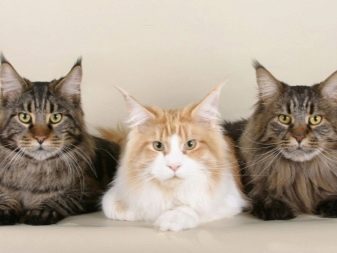
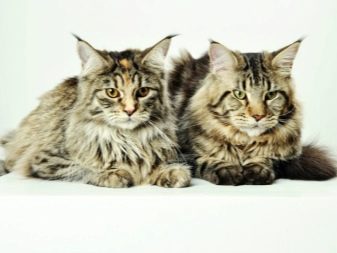
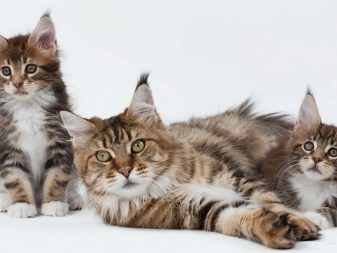
What does the term mean?
Polydactyly is a natural mutation characterized by the appearance of extra fingers. This gene appears infrequently, in 50% of cases, and only if there is a change in one of the parent. The reverse process is called oligodactyly. In addition, polydactic pets are considered more intelligent and playful.
Extra fingers do not in any way interfere with a fulfilling life.
Today breeders consider polydactyly to be the breed standard. It is of two types:
- preaxial - extra thumb;
- postaxial - extra little finger.
The first type is more common than the second. Often only the forelimbs are mutated. It is a proven fact that more than half of the Maine Coon population has mutations.
Experts divide polydacto into "correct" and "incorrect". Individuals with extra toes that have no problems are considered "correct". Maine Coons are called "incorrect", they have physical underdevelopment, which in turn leads to curvature of the forearm joints and bones. As a rule, these cats are castrated.

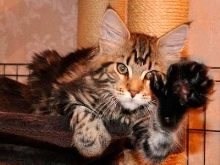
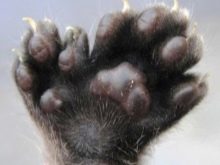
The history of the appearance of the mutation
Legend has it that when raccoon cats were crossed with cats living in the ports of Boston, the first individuals with mutations appeared. This is exactly how, according to scientists, the gene penetrated and stuck with this breed, because it is dominant. Since then, cats are often called companions of sailors, ship cats.
Sailors gladly took them on a long journey, as they believed that they bring good luck. Thanks to the additional phalanges of the fingers, it was easier for them to catch rodents, to maintain balance on a slippery deck, on ice and other surfaces. In some cases, it is said that Maine Coons could fish in reservoirs, a confirmation of this is the natural hunting instinct.
Many great figures have been fascinated by multi-toed creatures. So, Ernest Hemingway received a polydactyl Maine Coon as a gift and fell in love with him. At the moment, in the museum in honor of him, you can see a large number of Maine Coons with extra fingers. They are also often called "Hemingway" in honor of the talented writer. Theodore Roosevelt was also struck by the beauty of these animals. The first polydactyl cat named Slippers appeared in the White House with him.
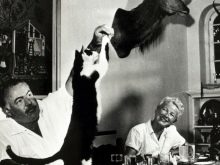
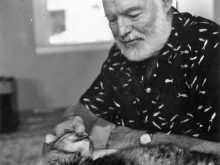

Description
Most often, the Maine Coon polydact looks much larger than its usual relatives. The paw of such a cat is wider and differs from the standard shape. Their limbs resemble mittens because of the fingers protruding to the side. Sometimes you can still hear "snowshoes", which also means legs with changes.
Even in individuals with the mutation, a noticeably wider chest is observed. It is more difficult for a polydactyl kitten to adapt; accordingly, he begins to walk a little later than ordinary cats. The joints and ligaments of six-fingered cats are usually stronger, which means that individuals are healthier, both physically and mentally. The color of the coat does not differ from the usual one.
Kittens are very playful, they often play with themselves. This breed does not like to sit still, if they do not have the opportunity to spend energy, showing their abilities, they can become depressed. Representatives of the breed will never bother you, they really like small children, and they will never offend them. GThe main trait is loyalty, it is not for nothing that they are often compared to dogs.The owners note that their intelligence is similar to that of a human, they are very talkative and know how to love.

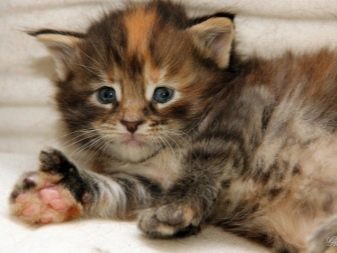
Polydactyl status
Polydact began to be recognized only in 2008. Although they are considered a deviation from the standards, they can still participate in exhibitions, but they cannot occupy places. Nowadays, separate standards are being developed for individuals with a mutation, and it is not surprising if in the near future they will be able to compete for the champion title. There are various organizations that recognize and support mutated cats. For example: CFA, TICA, CFF and ACFA.
Most Maine Coons with polydactyly are found in the United States of America. There are few of them in our country. Many consider them to be attractive animals that bring good luck to the home. Another part, relatively small, thinks that they are ugly. In ancient times in Europe, such cats were exterminated, all deviations from the norms were not recognized.
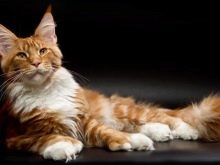
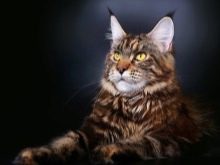
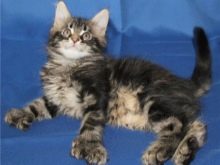
Breeding
Over time, the attitude towards multi-toed individuals has changed. If until the 80s such a phenomenon did not amaze anyone and did not attract public attention, then in the 90s everything changed. The creation of special nurseries for breeding cats with a mutation began. Nowadays, polydactyl Maine Coons are very popular, they participate in exhibitions and are in no way prohibited in the countries of the world. The idea of separating special individuals into a separate species is put forward.
To obtain a cat with a mutation, one of the parents must be its carrier. Given that the gene is dominant, the chance of having a polydactyl kitten is 50%. Through a generation, the mutation is not transmitted in the same way as the shape of the paws. It may differ from the parent, having a different shape and number of fingers.
Other subspecies
Maine Coons appeared in Europe only in the 70s, and since then there has been constant breeding work. It is thanks to hard work that new colors and some interesting features have appeared. An elongated muzzle, slanting eyes, a long body and thick hair are all characteristic features of the European Maine Coon.
American representatives have smaller size, but no less developed muscles and endurance. They look pretty friendly due to their round, expressive eyes. The presence of thick chic wool with tabby patterns gives them a certain charm. Brushes on ears set wide apart.
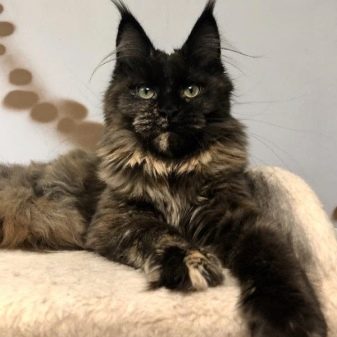
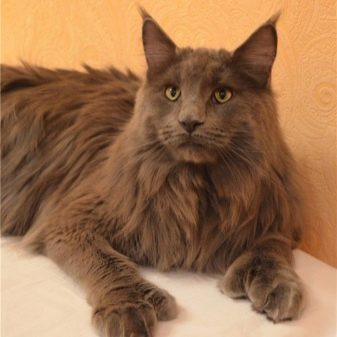
Should you have such a cat?
Polydactyly is a mutation that does not harm or interfere with a cat's full life. It affects exclusively the appearance, moreover, polydactyl cats are healthier than their relatives.
Of course, this will not affect you or your family members in any way, since this change is not transmitted to the person. So, we understand that polydactyly is not considered a serious abnormality, so we can say with complete confidence that there will be no problems with cats that have polydactyly.
It is worth knowing that cats with a mutation will cost 2 times more. Nowadays, it is considered unusual, something exotic. Their popularity only grows every day. But in Russia there are few people who are engaged in breeding, so some difficulties may arise.
For how polydact looks like, see below.
































